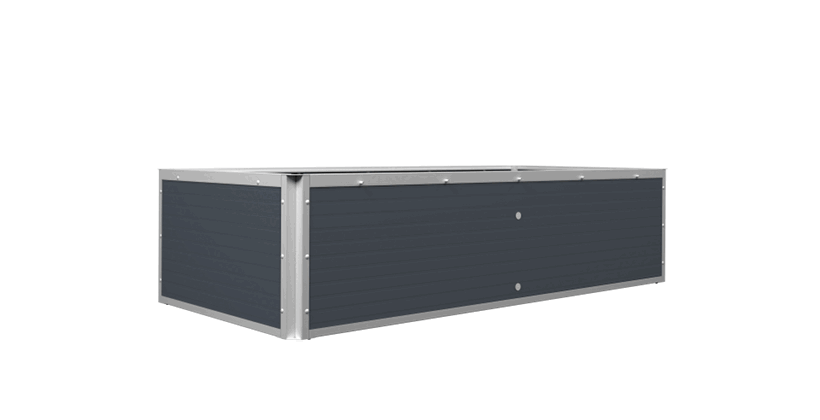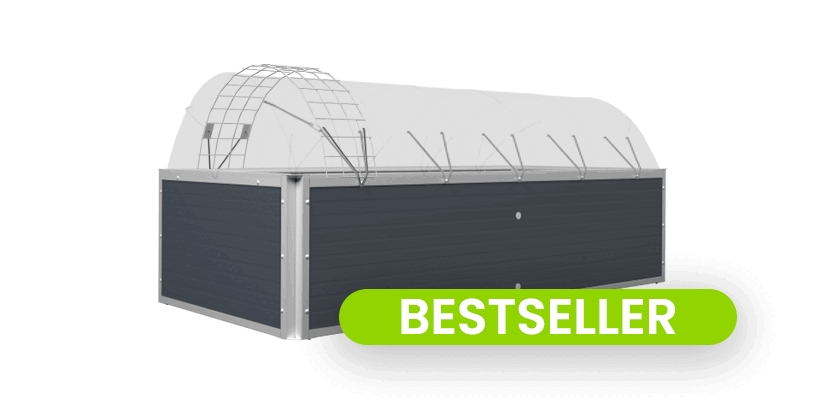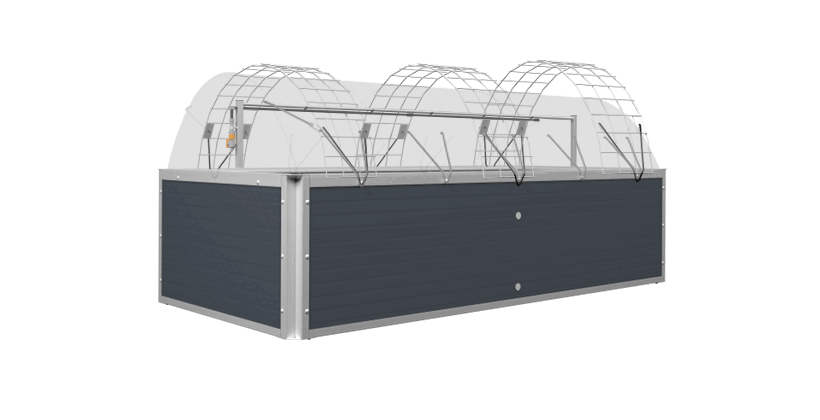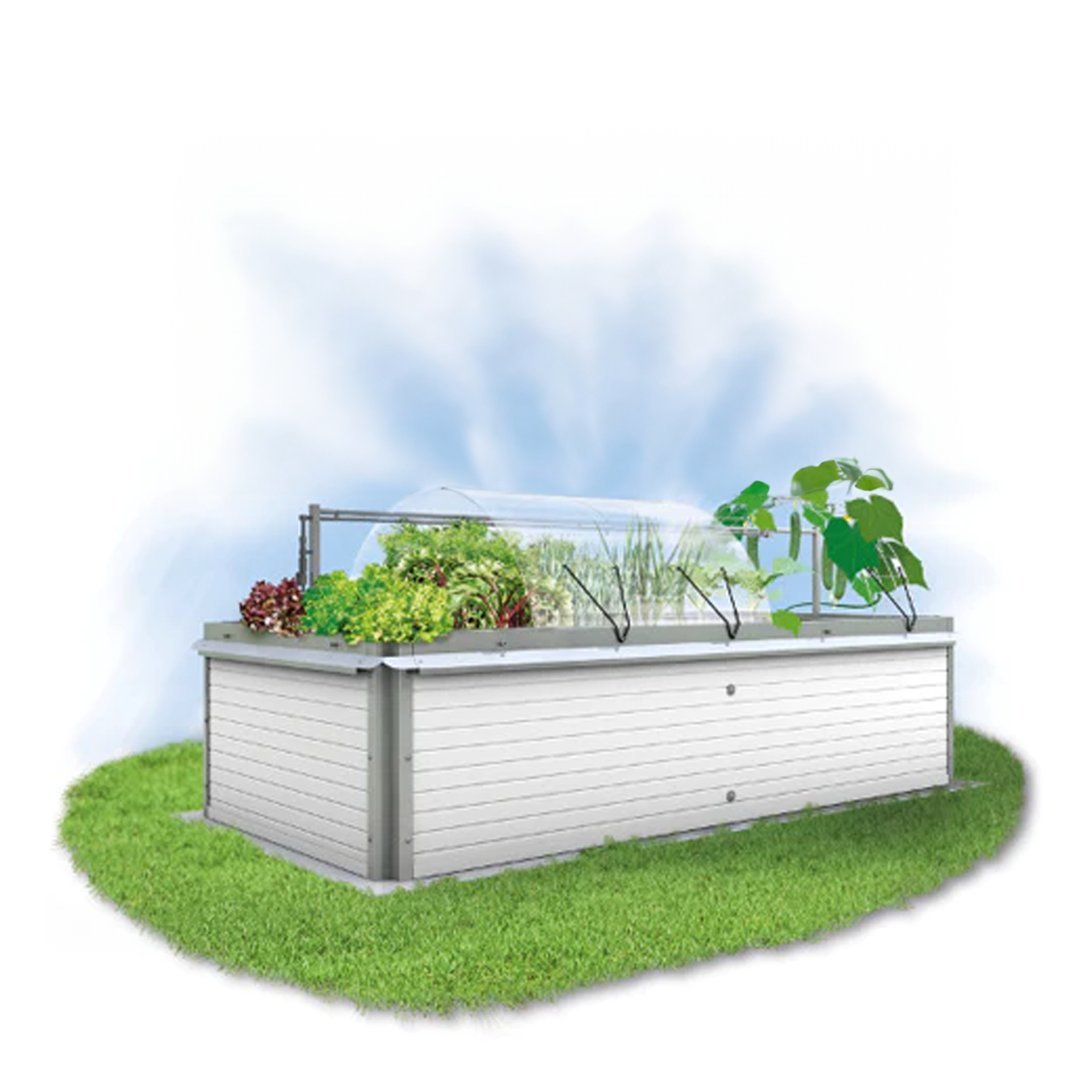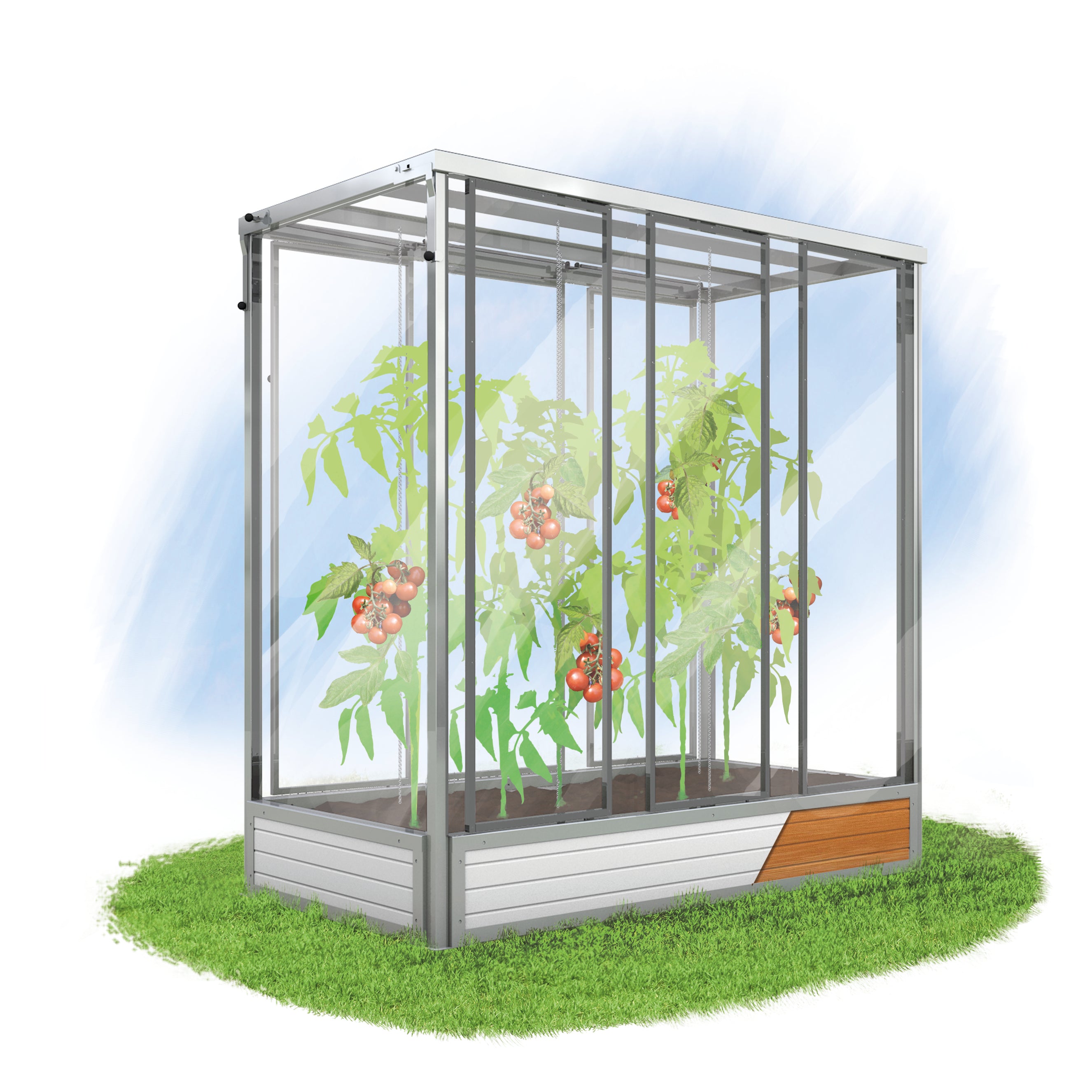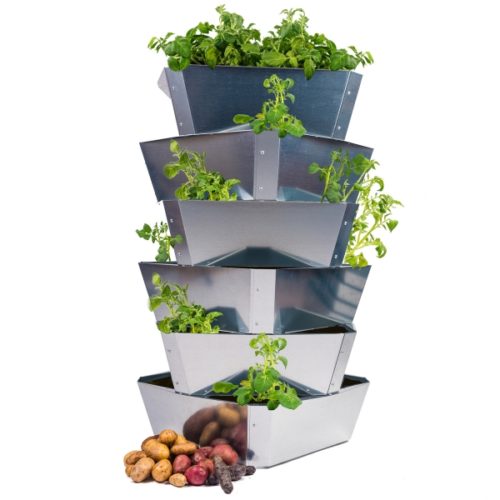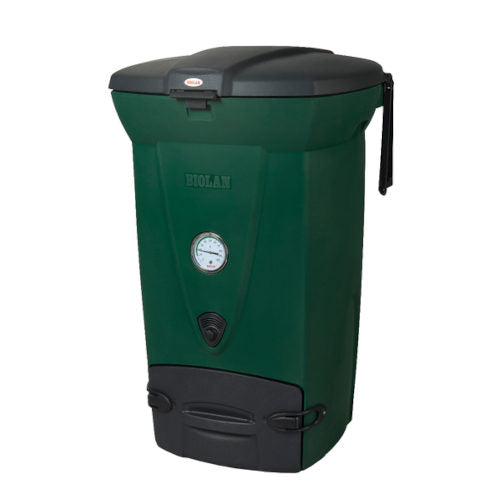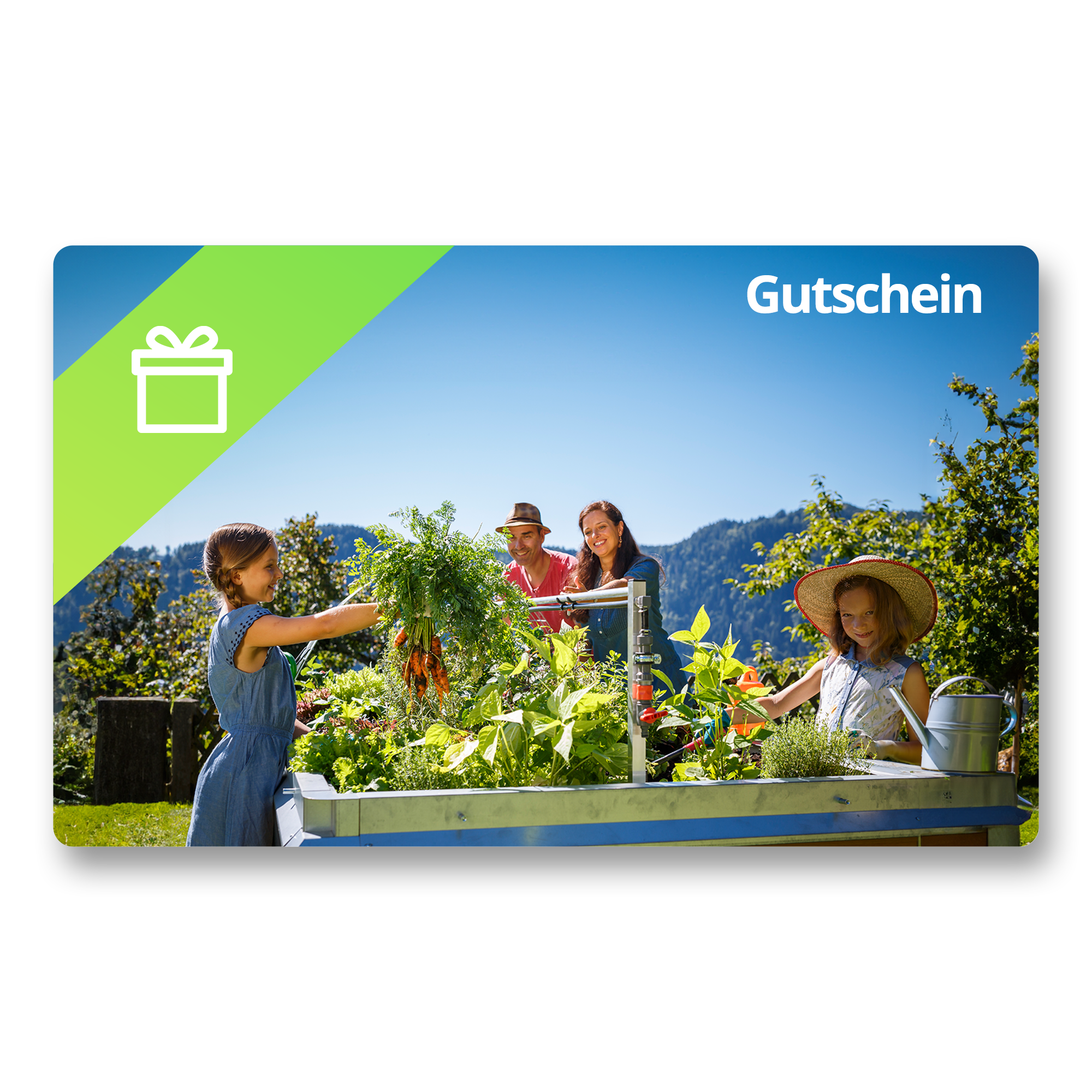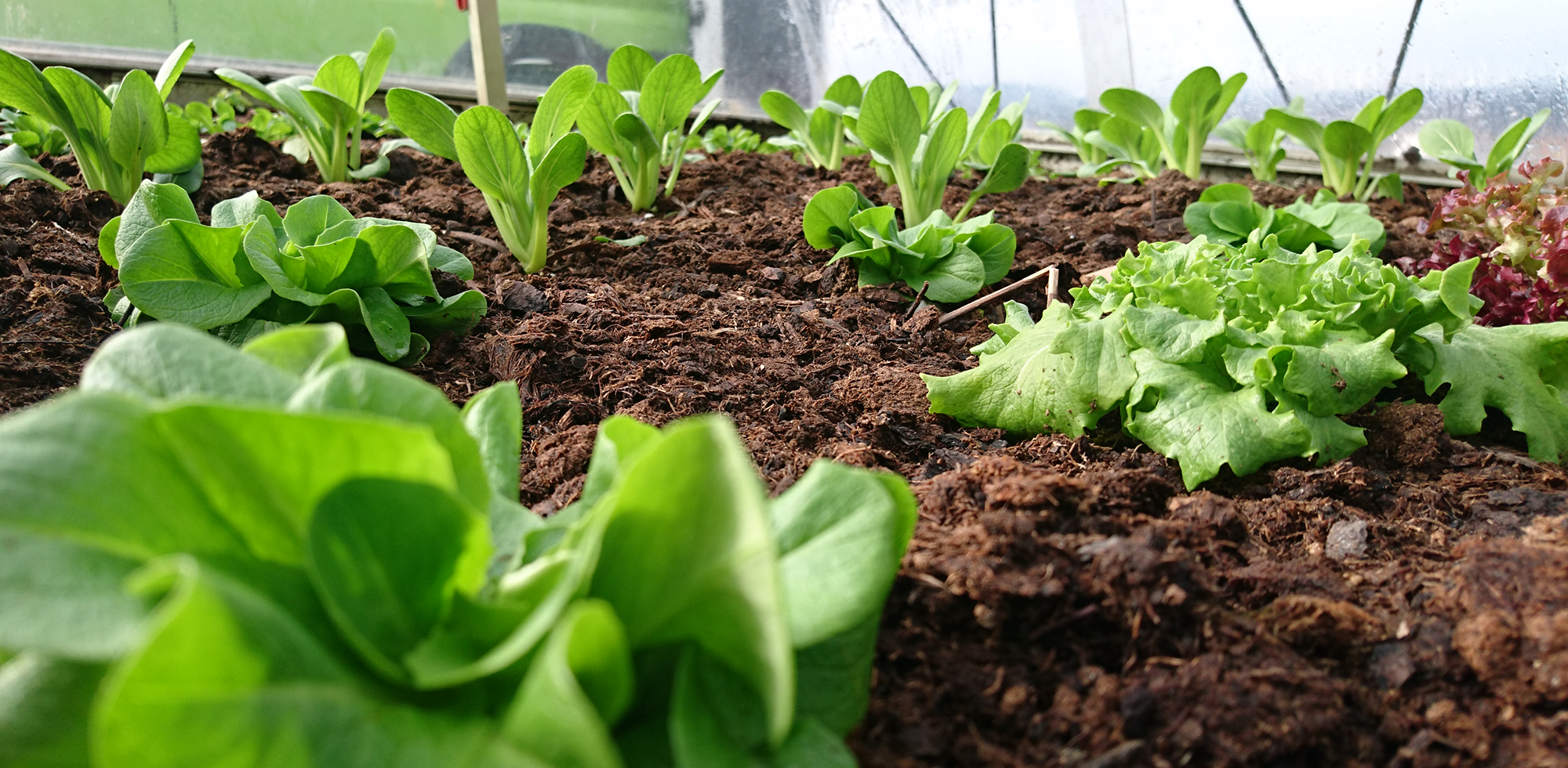Do you dream of healthy vegetables and delicious herbs from your own garden? Are you wondering whether a raised bed is the best choice for getting started in gardening? For beginners who want a high yield with moderate effort, the raised bed is an excellent choice . In this blog post, we will look at the key questions that beginners in raised bed gardening ask themselves:
1. How does gardening with a raised bed differ from a normal bed?
Gardening with a raised bed differs in many ways from working in a traditional garden bed , both in terms of the physical demands and the practical tasks involved in maintaining it.
- Ergonomics: The most noticeable and important change concerns posture when gardening. In contrast to working in a conventional bed , work in a raised bed takes place in an upright position. This protects the back and joints, which is particularly beneficial for older people or people with physical complaints. Tasks such as weeding, planting or harvesting can be done comfortably while standing.
- Workload and maintenance intensity: Due to the elevation and targeted layering in the raised bed, gardening is less laborious. The raised bed dries out more quickly and warms up earlier in the year, which means less time has to be spent preparing the soil. Fewer tools are also needed. Weed growth is also reduced in the raised bed, which significantly reduces the amount of maintenance required. Regular weeding, which often takes a lot of time in normal beds, is required much less often in the raised bed.
- Plant protection and pest control: In a raised bed, the plants are better protected from soil pests, as they have more difficulty reaching the raised structure. This reduces the need for chemical pest control and makes plant care easier. Rodents are stopped by a vole grid, snails and other pests have more difficulty reaching the raised bed and can be deterred by effective snail protection.
- Soil cultivation: Soil cultivation in a raised bed is much easier and requires less effort. While in a normal bed the soil often has to be dug up deeply and loosened to ensure good ventilation and nutrient distribution, the layered structure in the raised bed largely takes over this task.
Overall , gardening in raised beds is more efficient and less stressful, which makes it particularly attractive for beginners and older people. The easier maintenance and lower physical demands can increase the enjoyment of gardening while maximizing productivity and yield in the garden.

2. What are the advantages and disadvantages of a raised bed?
As with any decision, there are advantages and disadvantages to raised beds, which we will explain to you below.
Advantages of a raised bed:
- Easier maintenance: The increased working height eliminates the need to bend down, and weeds and pests are less of a problem.
- Earlier harvest: As the soil warms up better, plants can be planted and harvested earlier. With suitable accessories, such as a cold frame cover, the harvest season can be extended further.
- Individual design options: Raised beds are available in many shapes and materials that can be harmoniously integrated into any garden.
- Improved soil control: Thanks to the controlled layer structure, soil quality is easier to control, which increases yield.
- Higher yields: The characteristic layered structure of the raised bed ensures that plants are optimally supplied with nutrients, which leads to higher yields.
- Leaves and green waste: Leaves and green waste from shrubs and perennials can be used perfectly and without much effort for the lower layers in the raised bed.
Disadvantages of a raised bed:
- Higher initial costs: Purchasing and filling a raised bed is initially more expensive than a conventional bed.
- Limited depth: Compared to a normal bed, the planting depth is limited, which makes planting deep-rooted plants difficult.
- Care intensity: Even though it is easier to care for, a raised bed requires regular attention, especially in the first few years, to replenish the soil and supply nutrients.

3. Which raised beds are the most durable?
The longevity of a raised bed depends largely on the material it is made of. Here you will find the most common materials and their properties:
- Raised beds made of wood:
- Advantages: Natural look, good thermal insulation
- Disadvantages: Relatively short lifespan (depending on the type of wood), regular maintenance required (e.g. painting with wood preservatives)
- Raised beds made of metal (e.g. steel):
- Advantages: Very durable, weather-resistant, modern look
- Disadvantages: Higher acquisition costs, possibly greater warming of the soil
- Raised beds made of plastic:
- Advantages: Durable, easy to clean, available in many designs
- Disadvantages: Less natural appearance, environmental concerns due to plastic
Recommendation for beginners: For beginners who value durability and low maintenance, a raised bed made of steel is a good investment. It offers high durability and is very easy to care for compared to wood. The best providers also offer advice pages and extensive advice on the construction, accessories and care of a raised bed.

4. What can I grow in a raised bed?
A raised bed offers many possibilities for growing different types of plants, from vegetables to herbs to flowers. However, cultivation should be well planned in order to exploit the full potential of the raised bed.
Suitable plants for raised beds:
- Vegetables: lettuce, radishes, carrots, tomatoes, cucumbers – ideal for beginners as they grow quickly and require little care.
- Herbs: basil, parsley, chives, rosemary – they require little space and can be harvested all year round.
- Flowers: marigolds, nasturtiums – they beautify the flower bed and keep pests away.
Planting planning according to seasons:
- Spring: lettuce, radishes, herbs
- Summer: tomatoes, cucumbers, zucchini
- Autumn: spinach, lamb's lettuce, chard
Beginners who are looking for high yields will usually choose plants that grow quickly and easily. These include radishes or nasturtiums, for example. This way, you can soon enjoy the fruits of your gardening work!
In principle, almost any crop can be grown in a raised bed. However, plants that take up a lot of space are usually avoided. These include pumpkins, zucchini or perennial tomatoes.

5. What do I have to pay attention to when caring for a raised bed?
Caring for a raised bed differs in some ways from caring for a normal bed. Here are the most important aspects to pay attention to:
- Irrigation:
- Raised beds dry out more quickly, especially in sunny weather. An automatic watering system can be very helpful here and reduce the amount of maintenance required.
- Refilling the soil:
- As the layers in the raised bed sink, it is necessary to regularly refill the soil to continue to provide the plants with optimal growth conditions.
- Fertilization:
- Even though the layered structure already provides many nutrients, depending on the type of plant, regular fertilization should be carried out to maximize yield.
- Plant protection:
- Although the raised bed offers better protection against pests, nets and special protective devices may also be necessary to optimally protect the plants.
- Winter preparation:
- In autumn, the raised bed can be covered with a layer of mulch to make it winter-proof. Alternatively, winter vegetables such as lamb's lettuce or spinach can be sown.

Conclusion
A raised bed is an excellent choice for beginners who are looking for a productive but not too demanding activity in their garden. The many advantages, such as the ergonomic working height, the possibility of a higher yield and the diverse design options, make the raised bed a valuable element in your garden. With the right care and planning, it can bring long-term joy and contribute to fulfilling and successful gardening.
